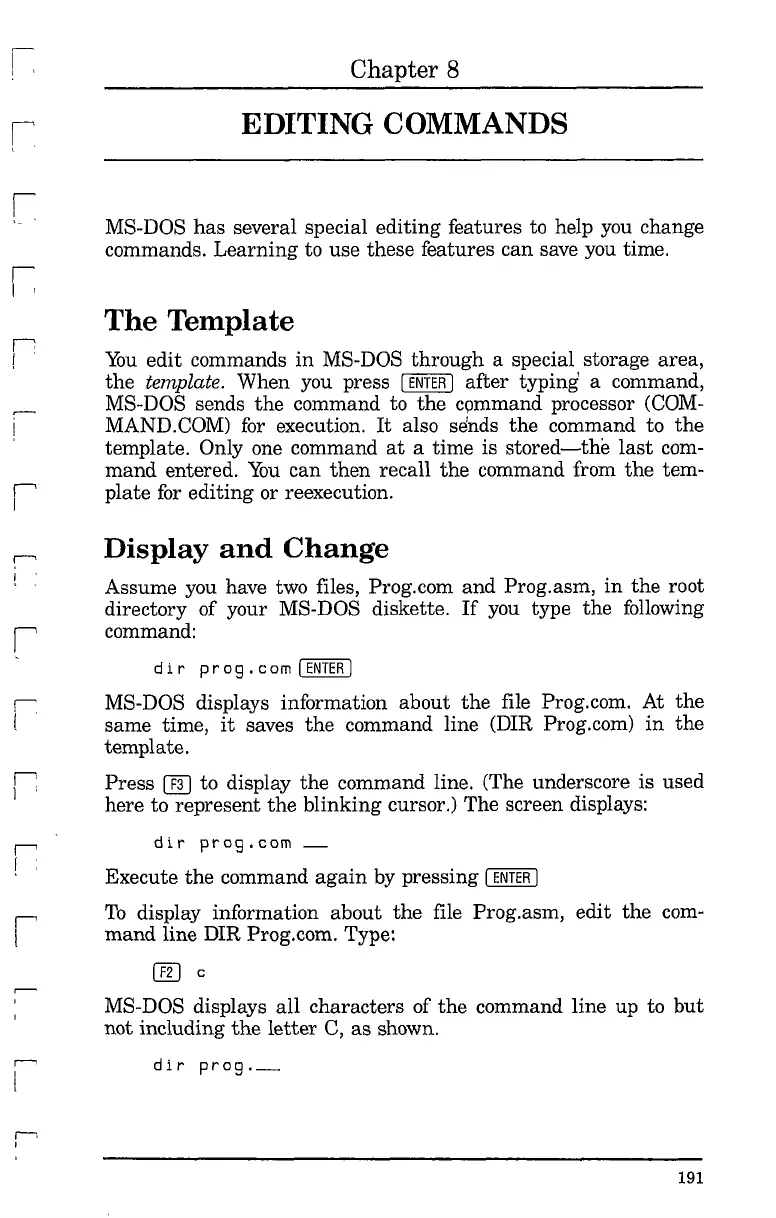I
'-
I,
i'
! .
r
I
I'
I :
I'
f
r-,
I
Chapter 8
EDITING COMMANDS
MS-DOS
has
several special editing features to help you change
commands. Learning to use these features can save you time.
The
Template
You
edit commands in MS-DOS through a special storage area,
the
template. When you press I
ENTER
I after typing a command,
MS-DOS sends
the
command to
the
cpmmand processor
(COM-
MAND.COM)
for
execution.
It
also sdnds
the
command to
the
template. Only one command
at
a time is
stored-the
last
com-
mand
entered.
You
can then recall
the
command from
the
tem-
plate
for
editing or reexecution.
Display
and
Change
Assume you have two files, Prog.com and Prog.asm,
in
the root
directory of your MS-DOS diskette.
If
you type the following
command:
dir
prog.com
I
ENTER
J
MS-DOS displays information about
the
file Prog.com. At
the
same time,
it
saves
the
command line (DIR Prog.com)
in
the
template.
Press
em
to display
the
command line. (The underscore is used
here to represent
the
blinking cursor.) The screen displays:
di.r
prog.com
_
Execute
the
command
again
by pressing I
ENTER
I
To
display information about
the
file Prog.asm, edit the
com-
mand line DIR Prog.com. Type:
mJc
MS-DOS displays all characters of
the
command line up to
but
not including
the
letter
C,
as
shown.
dir
prog._
191
